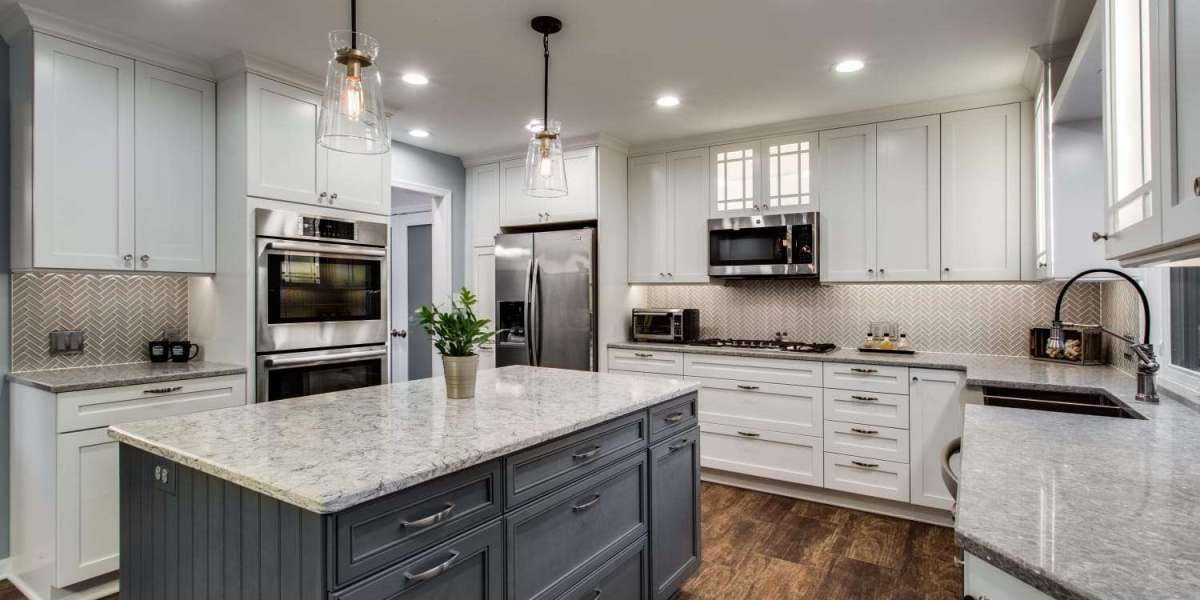The kitchen renovation is often called the heart of the home, and for a good reason—it’s where meals are created, memories are made, and families gather. If your kitchen feels outdated or lacks functionality, a remodel can be the perfect solution to breathe new life into your space. Here’s everything you need to know about embarking on a kitchen remodeling project, from planning and design to execution and budgeting.
1. Why Consider a Kitchen Remodel?
Remodeling your kitchen offers numerous benefits, including:
- Increased Functionality: Tailor your kitchen layout to meet your cooking and entertaining needs.
- Modern Aesthetics: Update outdated designs and appliances to create a stylish, modern space.
- Enhanced Home Value: A remodeled kitchen can significantly boost your property’s market value.
- Energy Efficiency: Incorporate energy-saving appliances and LED lighting to lower utility bills.
- Improved Comfort: Add features like better ventilation, ergonomic layouts, or additional seating to enhance usability.
2. Steps to a Successful Kitchen Remodel
a. Set a Budget
Determine how much you’re willing to spend. Break your budget down into categories such as appliances, materials, labor, and unexpected costs.
b. Define Your Needs and Wants
List what you need (more storage, better lighting, updated appliances) versus what you’d like to have (an island, premium finishes, or high-tech gadgets).
c. Plan the Layout
Popular kitchen layouts include:
- Galley Kitchens: Great for small spaces, with cabinets and appliances on two parallel walls.
- L-Shaped Kitchens: Provides a natural flow with an open feel.
- U-Shaped Kitchens: Maximizes counter space and storage.
- Island Layouts: Adds workspace, seating, or storage.
Work with a designer or contractor to optimize your layout for your space.
d. Choose Materials and Finishes
- Cabinets: Decide between stock, semi-custom, or custom options. Materials like solid wood or MDF (medium-density fiberboard) can suit different budgets.
- Countertops: Popular choices include quartz, granite, marble, and butcher block.
- Flooring: Options range from hardwood and tiles to vinyl and laminate.
- Backsplash: Adds personality with materials like glass, ceramic, or subway tiles.
e. Select Appliances and Fixtures
Invest in energy-efficient appliances and fixtures that match your kitchen’s aesthetic and functionality goals.
f. Hire Professionals
For major renovations, hire experienced contractors, electricians, and plumbers to ensure quality work and compliance with local codes.
3. Common Kitchen Remodel Features
- Open Shelving: For a modern and airy look.
- Smart Appliances: Wi-Fi-enabled refrigerators, ovens, and dishwashers.
- Statement Lighting: Chandeliers, pendant lights, or under-cabinet LED strips.
- Storage Solutions: Pull-out pantry systems, lazy Susans, and custom drawer organizers.
- Kitchen Island: Ideal for extra prep space, storage, or seating.
4. Budgeting for Your Kitchen Remodel
Kitchen remodeling costs can vary widely depending on the scope of the project:
- Minor Remodel: $5,000–$15,000 for cosmetic updates like painting, new hardware, and updated lighting.
- Mid-Range Remodel: $15,000–$50,000 for new cabinets, countertops, appliances, and minor structural changes.
- Luxury Remodel: $50,000+ for high-end materials, custom cabinetry, and professional-grade appliances.
5. DIY vs. Professional Kitchen Remodeling
While some aspects of a remodel can be DIY-friendly (like painting or hardware installation), hiring professionals for tasks like plumbing, electrical work, and cabinet installation ensures safety and quality.
6. Avoiding Common Remodeling Mistakes
- Skipping the Plan: Lack of planning can lead to unexpected costs and delays.
- Ignoring Storage Needs: Ensure you have enough storage for your cookware, pantry items, and utensils.
- Choosing Style Over Function: Balance aesthetics with practicality to create a kitchen that works for you.
- Overlooking Lighting: Layered lighting (task, ambient, and accent) enhances both functionality and ambiance.
7. Post-Remodel Maintenance
Once your remodel is complete, maintain your kitchen by:
- Regularly cleaning countertops, cabinets, and appliances.
- Using protective pads on furniture to prevent scratches on floors.
- Sealing natural stone countertops to prevent staining.
8. The Payoff of a Kitchen Remodel
A kitchen remodel isn’t just an investment in your home; it’s an investment in your quality of life. Whether you’re cooking for your family or hosting friends, a well-designed kitchen makes every moment more enjoyable.
Take the first step toward your dream kitchen by consulting with local experts or visiting a kitchen showroom to bring your vision to life.







